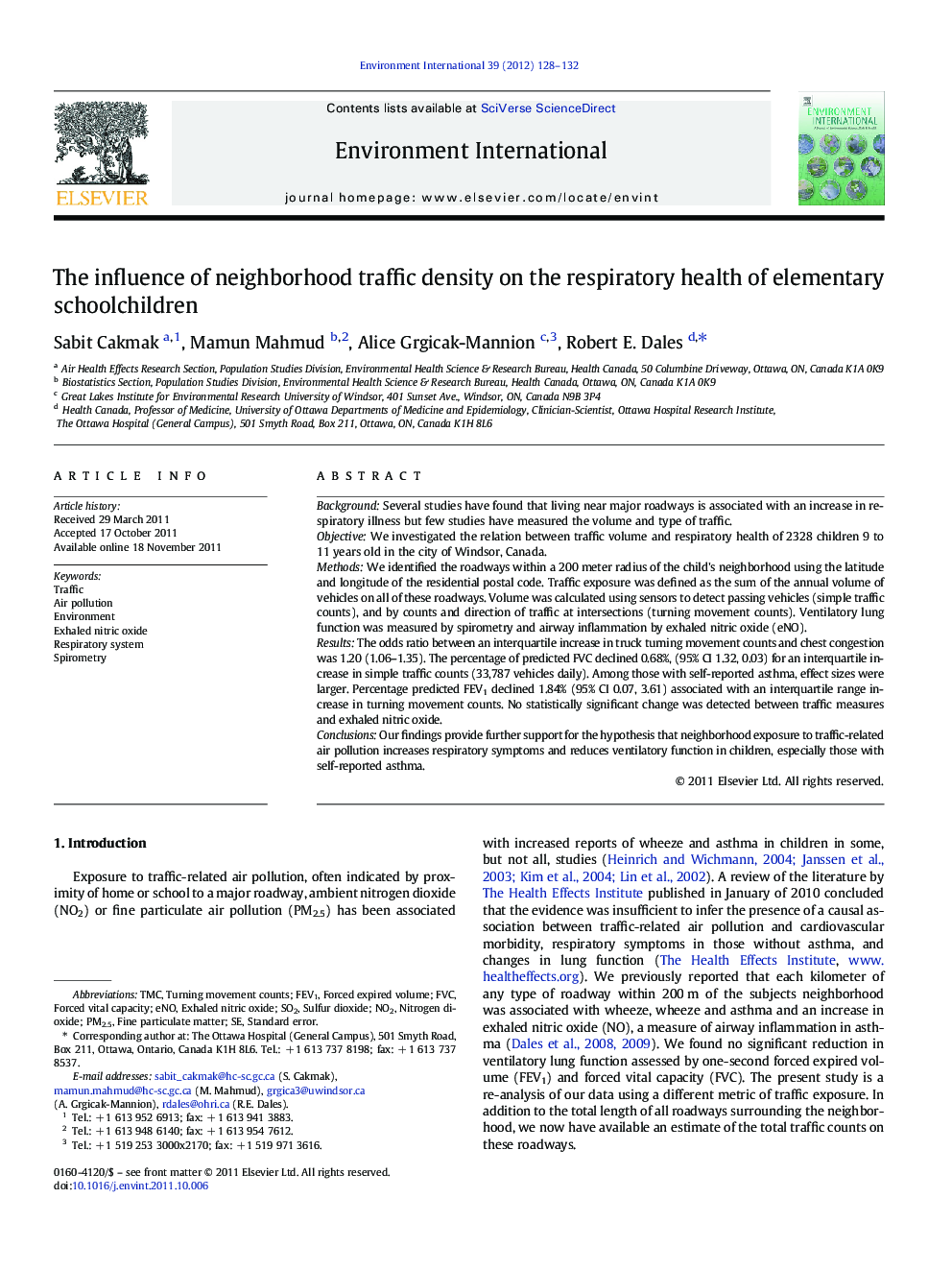| Article ID | Journal | Published Year | Pages | File Type |
|---|---|---|---|---|
| 4423142 | Environment International | 2012 | 5 Pages |
BackgroundSeveral studies have found that living near major roadways is associated with an increase in respiratory illness but few studies have measured the volume and type of traffic.ObjectiveWe investigated the relation between traffic volume and respiratory health of 2328 children 9 to 11 years old in the city of Windsor, Canada.MethodsWe identified the roadways within a 200 meter radius of the child's neighborhood using the latitude and longitude of the residential postal code. Traffic exposure was defined as the sum of the annual volume of vehicles on all of these roadways. Volume was calculated using sensors to detect passing vehicles (simple traffic counts), and by counts and direction of traffic at intersections (turning movement counts). Ventilatory lung function was measured by spirometry and airway inflammation by exhaled nitric oxide (eNO).ResultsThe odds ratio between an interquartile increase in truck turning movement counts and chest congestion was 1.20 (1.06–1.35). The percentage of predicted FVC declined 0.68%, (95% CI 1.32, 0.03) for an interquartile increase in simple traffic counts (33,787 vehicles daily). Among those with self-reported asthma, effect sizes were larger. Percentage predicted FEV1 declined 1.84% (95% CI 0.07, 3.61) associated with an interquartile range increase in turning movement counts. No statistically significant change was detected between traffic measures and exhaled nitric oxide.ConclusionsOur findings provide further support for the hypothesis that neighborhood exposure to traffic-related air pollution increases respiratory symptoms and reduces ventilatory function in children, especially those with self-reported asthma.
► We investigated the respiratory health effect of traffic-related air pollution. ► We calculated the volume of traffic within a 200 meter radius of children's neighborhoods. ► Traffic was associated with chest congestion and reduced lung function. ► Children with asthma were more susceptible.
